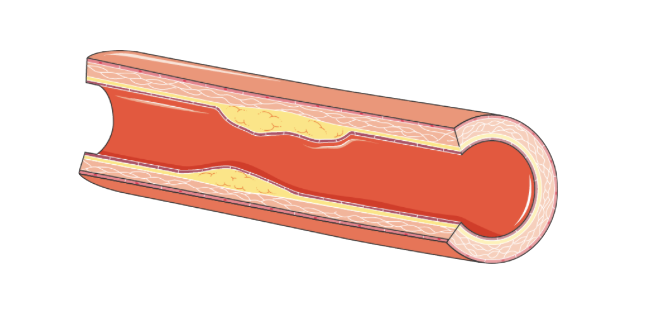What is Peripheral Arterial Disease?
Peripheral Arterial Disease is a chronic condition in which plaque builds up in the arteries that are responsible for delivery of blood to the legs. As the plaque worsens and the arteries narrow, this limits blood flow to the legs causing discomfort with movement.

This graphic of a diseased artery depicts the plaque build up associated with Peripheral Arterial Disease. This partial blockage or occlusion cause blood flow to decrease.
RISK FACTORS
INCREASING AGE
SMOKING HISTORY
HIGH CHOLESTEROL
HIGH BLOOD PRESSURE
DIABETES
OBESITY
SYMPTOMS
CRAMPING
PAIN
ACHING
BURNING
OPEN WOUNDS ON FEET
TREATMENT OPTIONS
RISK FACTOR MANAGEMENT
MEDICATIONS
EXERCISE / LIFESTYLE
SMOKING CESSATION
SURGICAL INTERVENTION

The WAVE Program at Vascular Health Bronte was developed for patients with Peripheral Arterial Disease and focuses on increasing mobility and risk factor modification. This eight week program focuses on non-surgical means of improving symptoms related to arterial disease.
DISCLAIMER
The information provided is for informational purposes only and is not to replace professional medical advice, diagnosis, treatment or care. Always seek the advice of a physician or other qualified health provider concerning any questions you may have regarding the above information and any medical condition you believe may be relevant to you or to someone else. The above information is not exhaustive and does not cover all diseases, physical conditions or their treatments.
